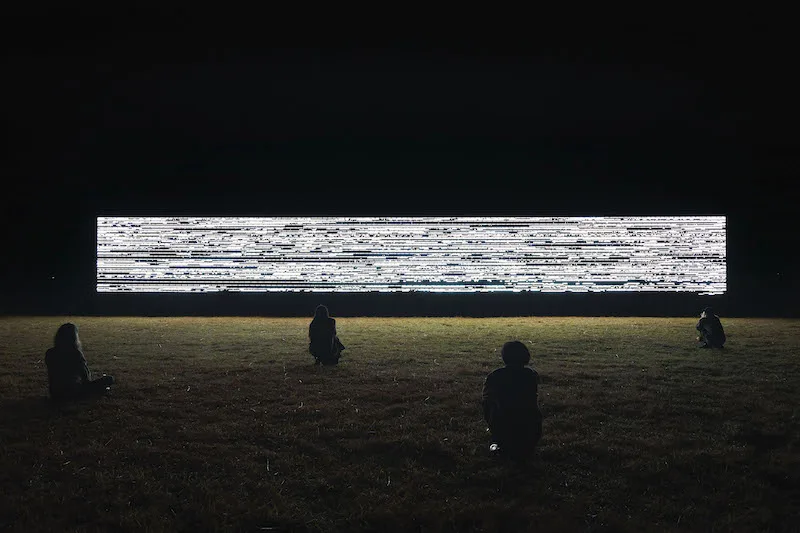
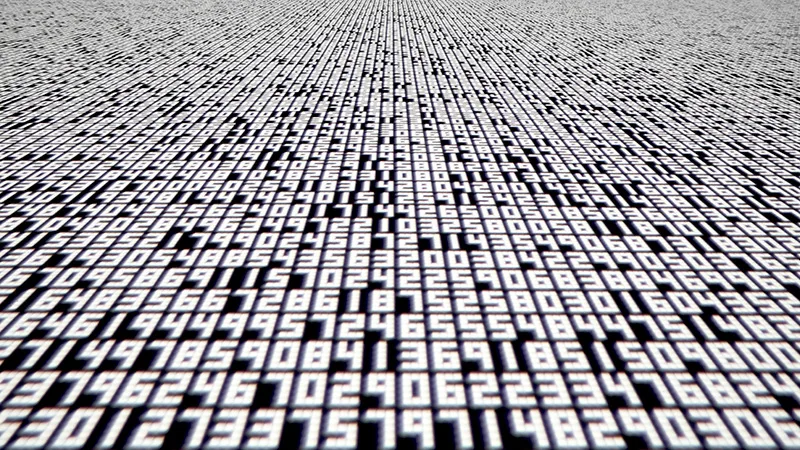
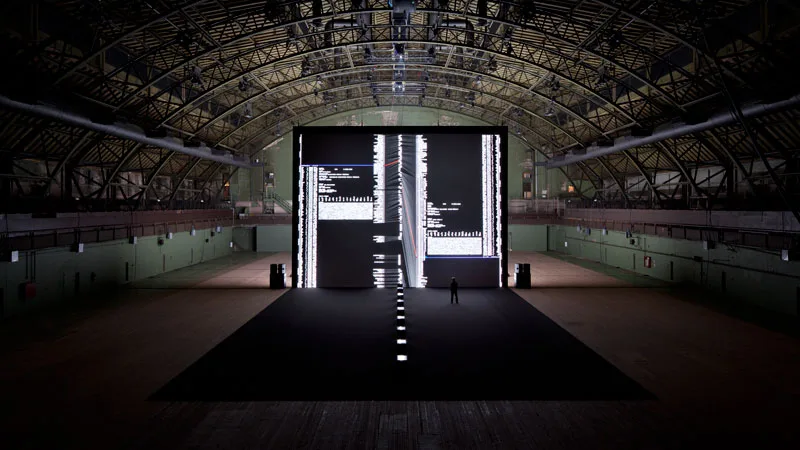
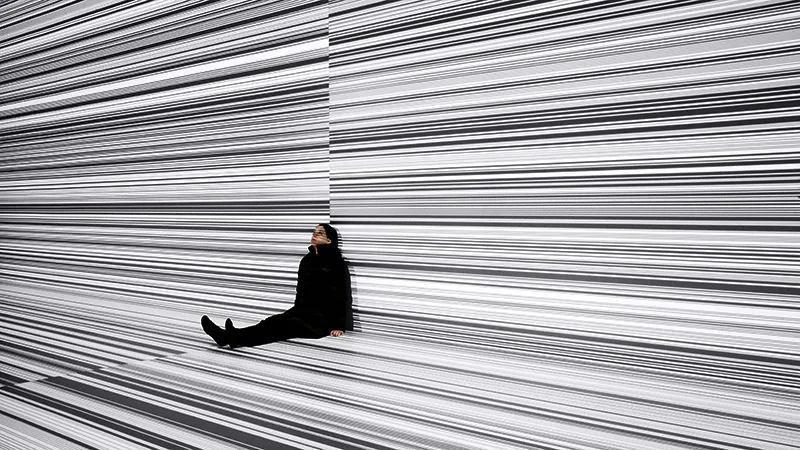
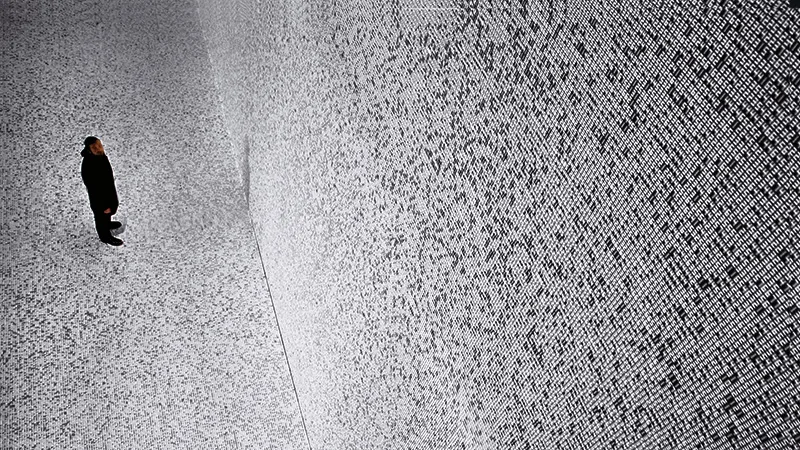
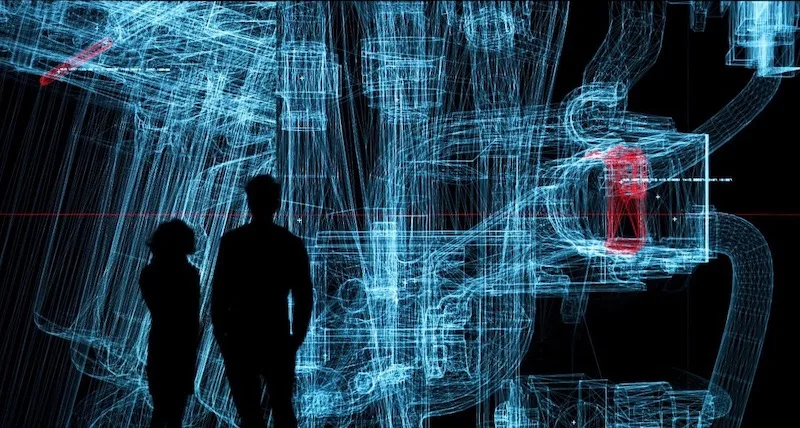
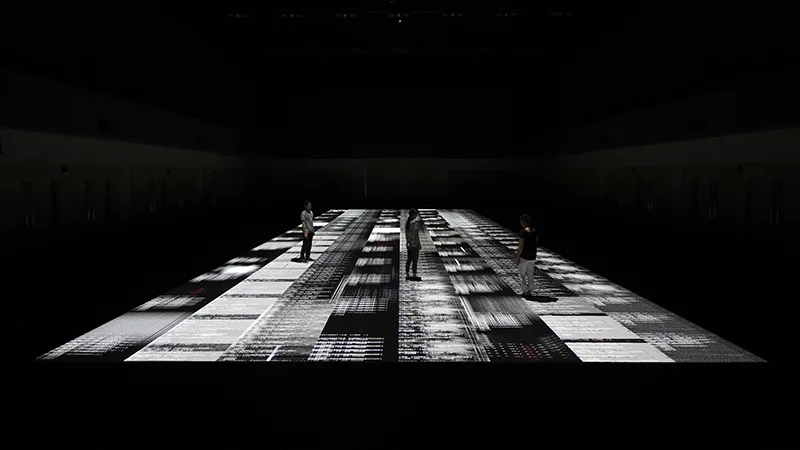
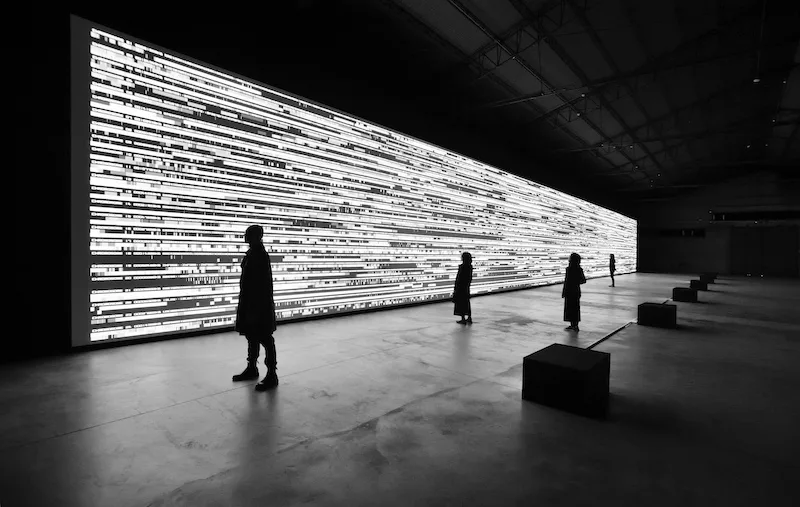
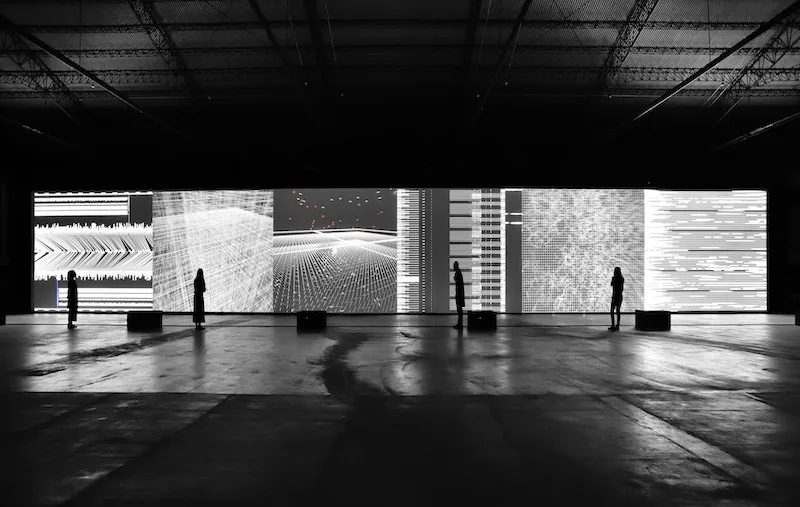
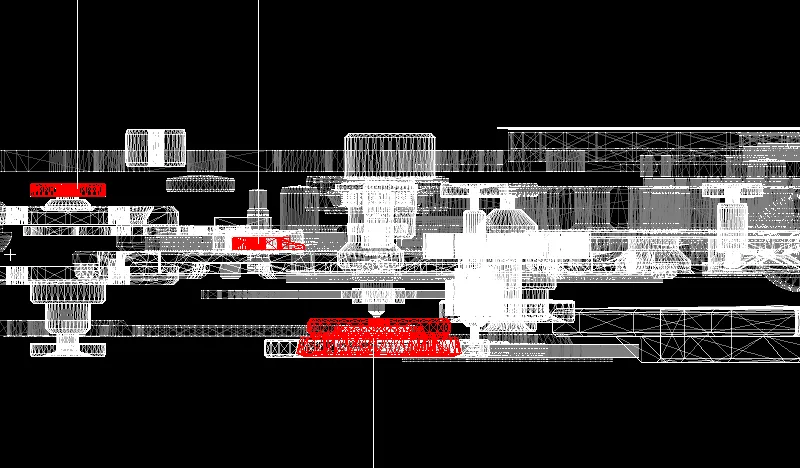
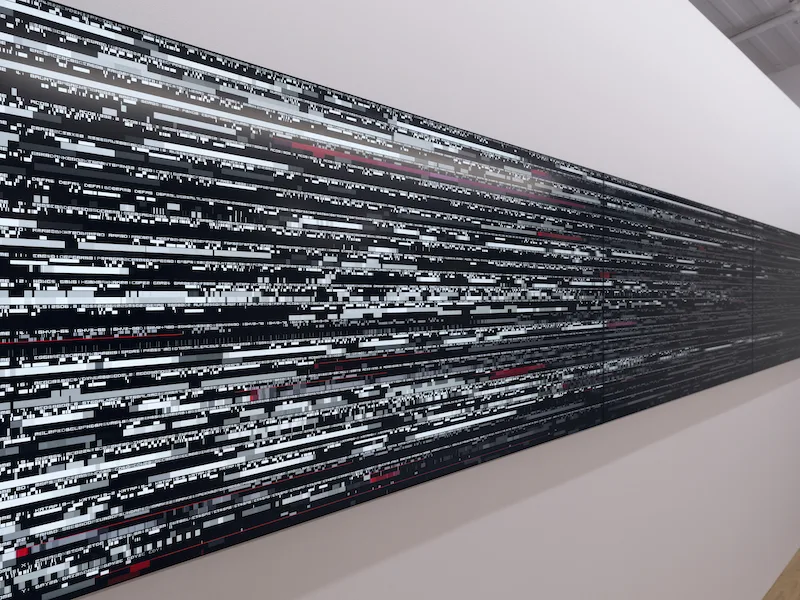
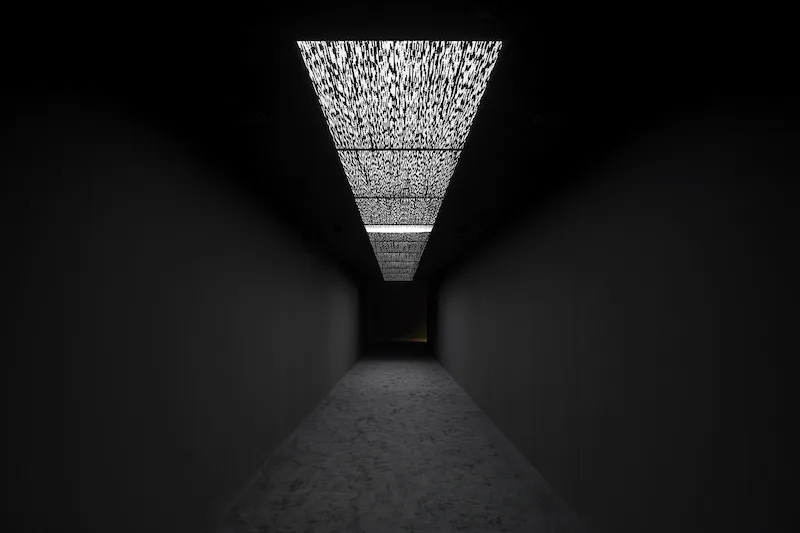
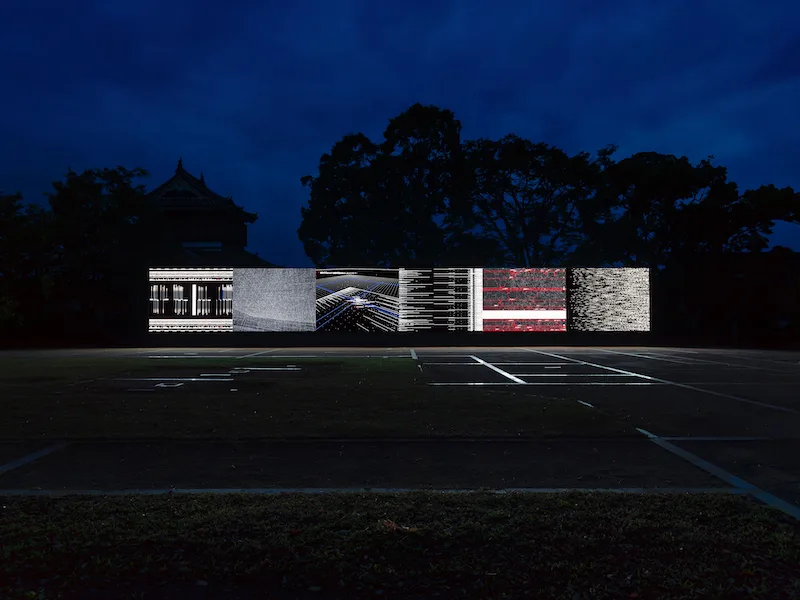
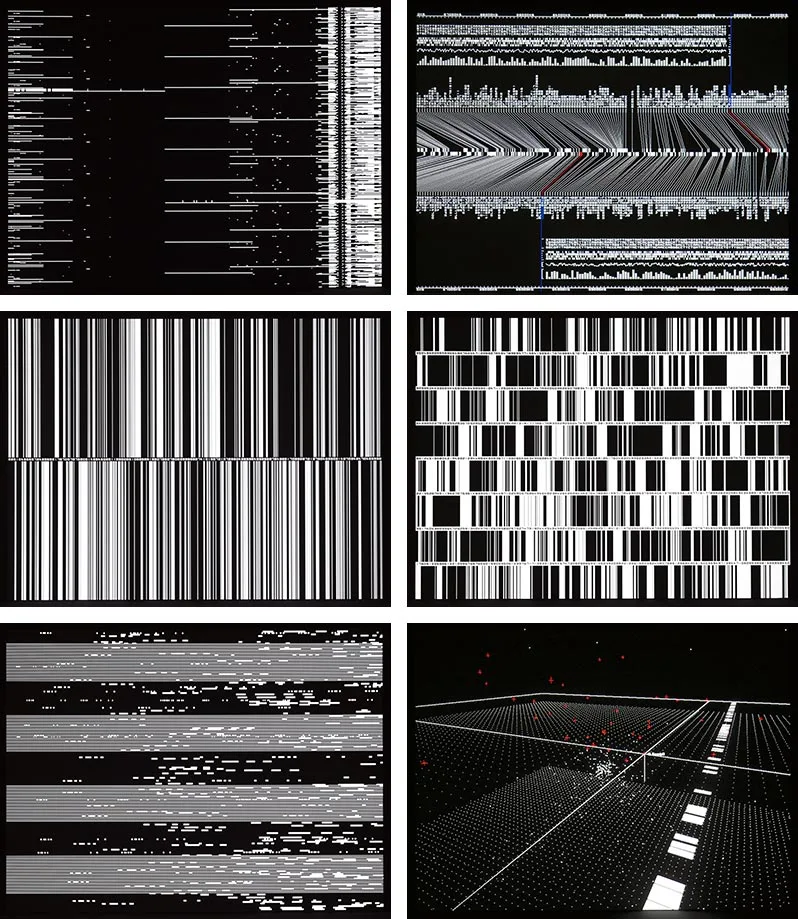
Ryoji Ikeda’s Datamatics is a seminal work in digital art, exploring the intersection of sound and data visualisation. This is no static installation; it is a deep and immersive experience. Ikeda transforms raw data – from the simplest numerical sequences to complex scientific datasets – into a compelling audio-visual spectacle. It is a profound exploration of how information structures our understanding of the world.
The core of Datamatics lies in its ability to render abstract information palpable. Ikeda utilises minimalist aesthetics, favouring monochrome palettes and stark geometric forms, which emphasises the raw power of the data itself. The soundscape is equally stripped-back, utilising precise frequencies and rhythms to mirror the visual patterns. The effect is hypnotic, drawing the viewer into a world defined purely by the flow and structure of data. This creates an oddly compelling experience, simultaneously unsettling and beautiful.
While Datamatics presents a distinctive and consistent aesthetic, the data source is not fixed, allowing for Datamatics to be adapted to different contexts and datasets. The digital nature of the project allows for both large-scale installations in galleries and smaller, more intimate presentations.
Beyond its technical ingenuity, Datamatics raises thought-provoking questions. It confronts viewers with the overwhelming amount of data that shapes our reality – an experience that is simultaneously impressive and unsettling. The sheer scale of information, represented in its minimalist form, invites contemplation on our relationship with technology and the increasingly data-driven nature of our world. It is not merely a display of data; it is a commentary on it.
The project’s influence continues to resonate within contemporary digital art. Ikeda’s use of minimalist aesthetics combined with complex datasets has become influential for many artists working in similar fields, setting a precedent for how information can be presented visually and sonically.
Last modified: January 6, 2025









